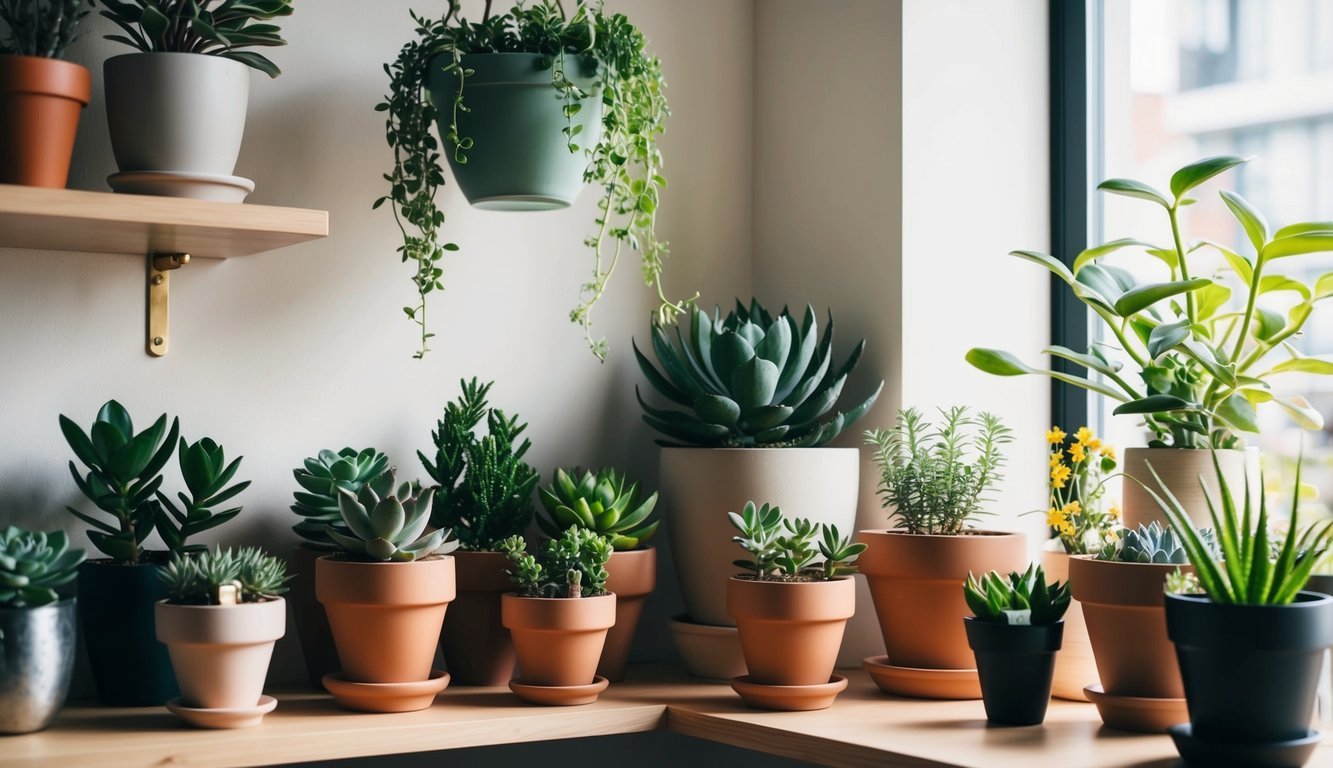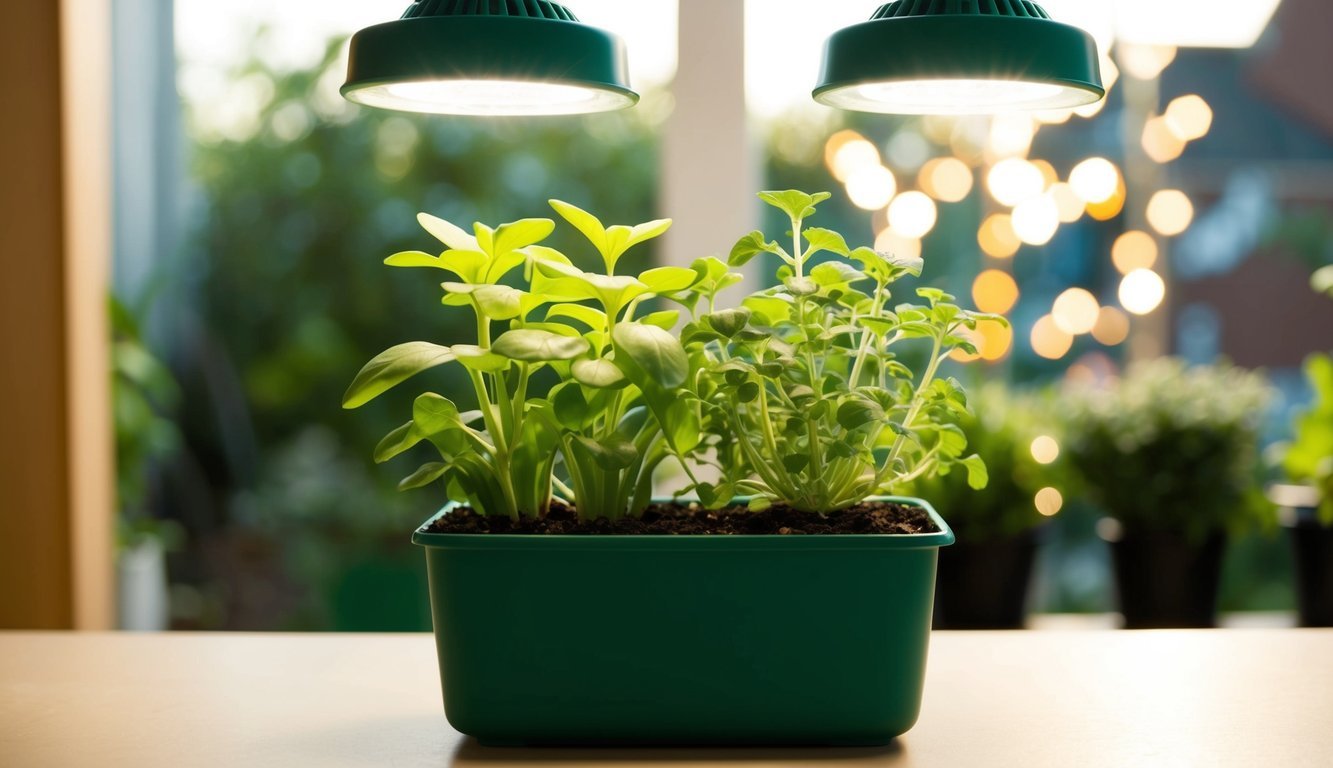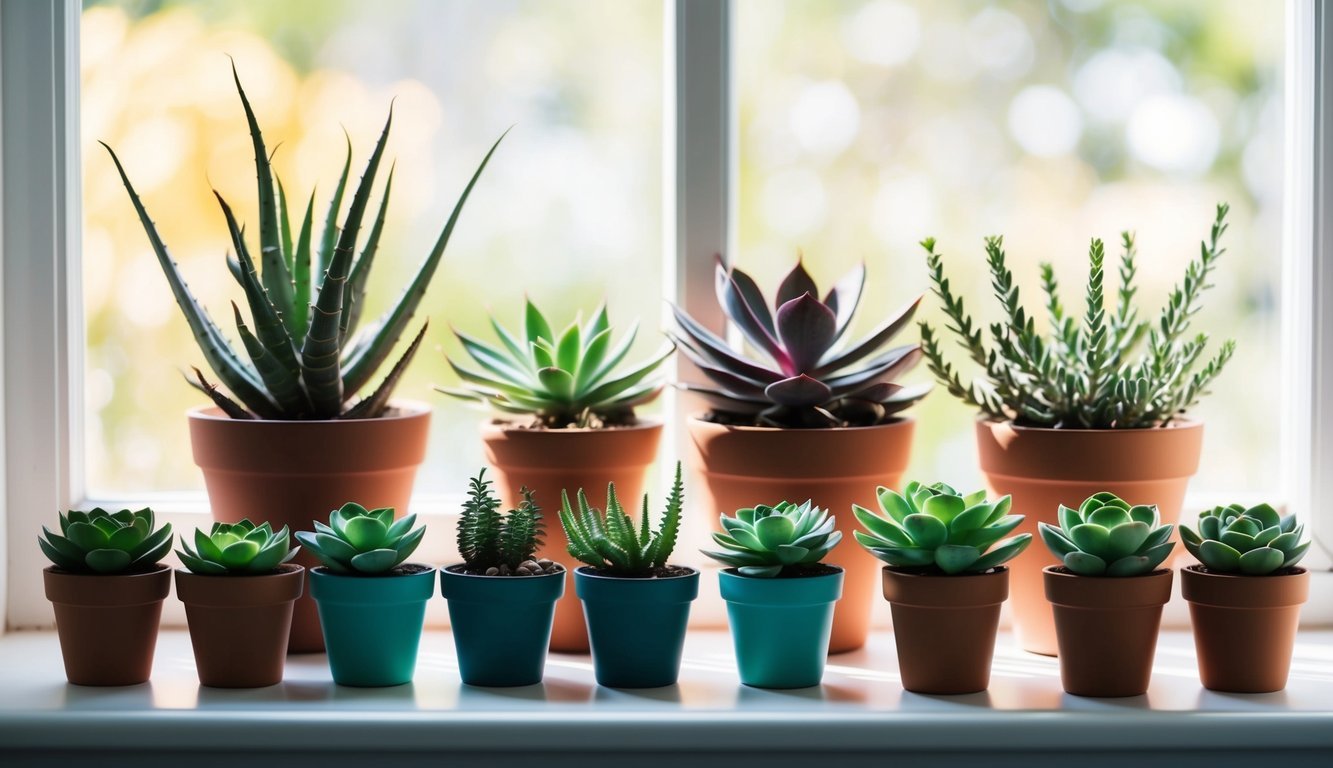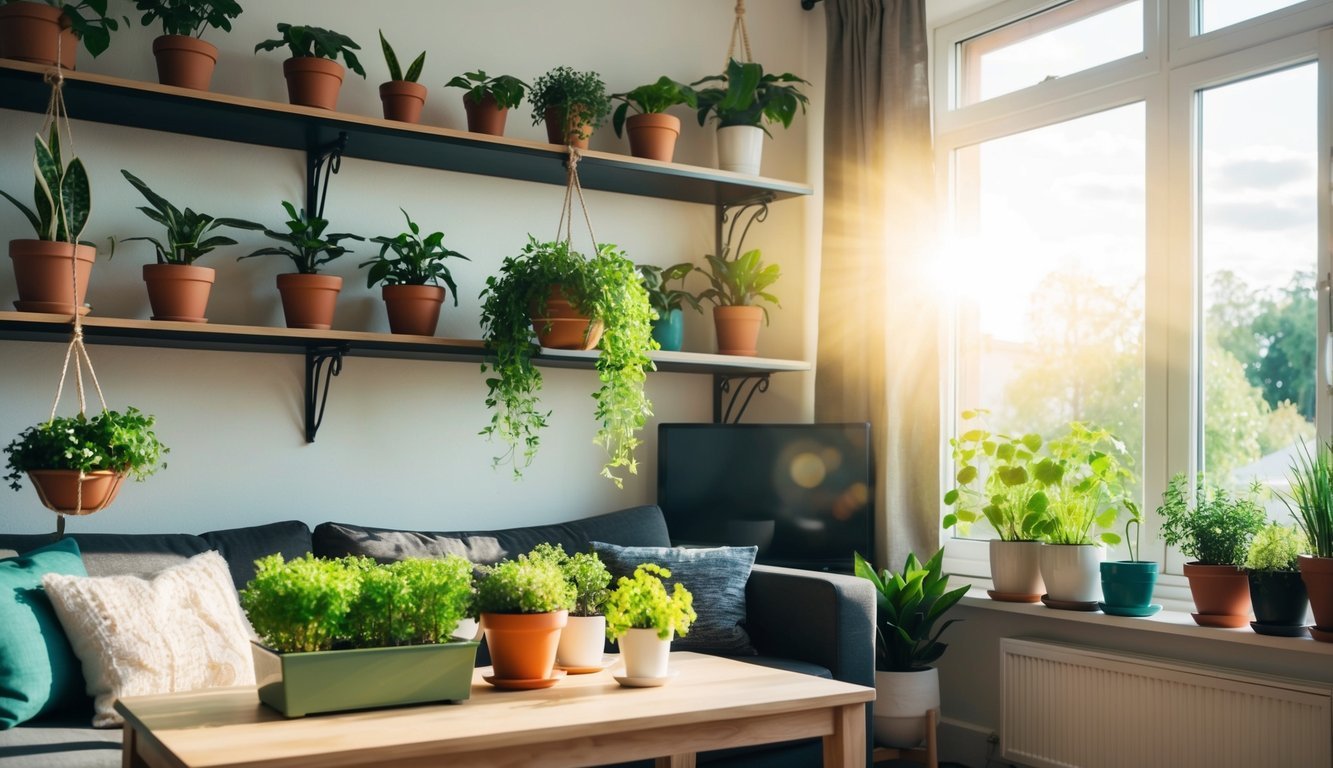Creating a small indoor garden can be a fun and rewarding project, especially if you’re short on time.
With a bit of planning and a few efficient techniques, you can transform even the tiniest space into a green oasis.
There’s something incredibly satisfying about nurturing plants and being surrounded by nature, even when indoors.

From selecting the right plants to using clever containers, there are plenty of ways to make the process quicker and easier.
Whether you’re a busy professional or just someone who wants to enjoy some greenery without dedicating hours each week, these time-efficient strategies will help you get started.
1) Use self-watering planters
Self-watering planters have been an absolute game-changer for my indoor garden.
They come with a reservoir that supplies water to the plants as needed.
This ensures that my plants stay hydrated without the constant attention.
Using lightweight potting soil is key.
Regular garden soil can become too dense, complicating water absorption.
I always opt for a mix that allows moisture to circulate freely around the roots.
Creating my own self-watering planter is a fun DIY project.
I can upcycle old containers or even use plastic bottles.
It’s simple, saves time, and helps reduce waste while nurturing my plants effectively.
With these planters, I’ve seen a noticeable improvement in my plant’s health.
They thrive with consistent moisture, making it easier for me to enjoy gardening without the daily hassle.
Opt for vertical garden kits
When I decided to start my small indoor garden, I found vertical garden kits to be a game-changer.
They’re designed for easy setup, allowing me to maximize my space effectively.
These kits typically include everything I need, from planters to wall mounts.
I didn’t have to worry about sourcing individual components.
It saved me a lot of time and effort.
Another perk is the variety of designs available.
I could choose one that matched my home decor or even my personal style.
It felt satisfying to have a garden that also served as a piece of art.
Maintaining a vertical garden kit is fairly simple, too.
Most come with built-in watering systems that ensure my plants get consistent moisture.
This feature has helped me keep my plants healthy without much hassle.
Setting up a vertical garden kit is a fun project, and it added a vibrant touch to my living space.
Plus, it’s a practical solution for anyone with limited room.
I highly recommend checking them out if you want to delve into indoor gardening!
3) Try hydroponic growing systems
I find hydroponic systems to be an exciting option for indoor gardening.
These systems allow me to grow plants without soil, using nutrient-rich water instead.
It’s a clean and efficient way to cultivate herbs or vegetables right at home.
One popular method I’ve tried is Deep Water Culture (DWC).
In this system, plants sit in a solution of oxygenated water.
It’s straightforward to set up and maintain, which suits my busy lifestyle.
Another method I enjoy is the Ebb and Flow system.
It floods the plant containers with nutrients and then drains back into the reservoir.
This cycle helps ensure that my plants get the right amount of moisture and nutrients.
Hydroponics also allows me to control environmental factors like temperature and humidity.
I can keep things balanced to ensure healthy plant growth.
Plus, many systems require minimal space, making them perfect for small indoor areas.
Trying hydroponics has transformed how I garden, giving me more flexibility and faster results in my indoor gardening journey.
4) Use grow lights for sunlight

Using grow lights has been a game changer for my indoor garden.
They help mimic natural sunlight, which is crucial for my plants’ growth.
I place the lights just 6 to 18 inches above my plants.
This distance helps ensure they get enough light without being burned.
Different plants have different light needs, so I adjust the settings based on what I’m growing.
Some herbs require more light, while others prefer less.
It’s important to keep an eye on the light levels.
I often check to see if my plants are stretching towards the light.
If they are, I know I need to lower the lights.
For seedlings, keeping the grow lights close is especially helpful.
It prevents them from becoming leggy and ensures they stay compact.
Overall, utilizing grow lights has made it easier for me to manage my indoor garden, no matter the weather outside.
5) Get compact plant shelves

When creating a small indoor garden, compact plant shelves are a game changer.
They allow me to maximize vertical space and display a variety of plants without cluttering my room.
I often choose shelving units that are sleek and multi-tiered.
This helps create an organized look and makes it easy to care for my plants.
Vertical shelves can fit into tight corners or small areas, making them perfect for any room.
I love how they let me combine different plants, from small succulents to larger pots.
DIY solutions are also great.
I’ve seen an array of creative plant shelf ideas online that inspire me to build my own.
A simple wall-mounted shelf can be both stylish and functional.
Compact plant stands are another option.
They come in all shapes and sizes, adding personality to my space while keeping my plants safely displayed.
Using these shelves not only beautifies my indoor garden but also enhances my overall living environment.
6) Choose easy-care plants like succulents

When starting my indoor garden, I always recommend easy-care plants like succulents.
These little gems require minimal attention and thrive in various conditions.
Succulents store water in their leaves, making them drought-tolerant.
I often forget to water my plants, but succulents handle this well.
Just remember to let their soil dry out between waterings.
Plants like jade and haworthias are great choices for beginners.
The jade plant, also known as the money plant, is attractive and easy to care for.
Haworthias add a unique touch with their fascinating shapes.
Another advantage is their adaptability to light.
Most succulents prefer bright, indirect sunlight, which fits perfectly into my routine.
A sunny windowsill often becomes their favorite spot.
Plus, they come in various sizes and colors, allowing me to create a unique aesthetic.
Whether I want a pop of green or a splash of color, there’s a succulent that fits.
With all these benefits, choosing succulents makes my indoor gardening experience enjoyable and stress-free.
They really are the perfect plant for anyone starting a small indoor garden.
7) Try a kitchen herb garden
Creating a kitchen herb garden is one of my favorite ways to add greenery to my home.
It’s a practical choice that brings fresh flavors to my meals.
I love using small pots on my windowsill or a vertical garden setup.
This method saves space while allowing easy access to herbs I use often, like basil, mint, and chives.
When watering, I make sure not to overdo it.
I let the soil dry out a bit between waterings, testing it with my finger about two inches down.
This keeps the herbs healthy and thriving.
Choosing the right herbs is crucial.
I’ve found that some varieties, like parsley and lemon balm, are much easier to grow indoors.
They don’t require as much sunlight compared to other herbs, making them perfect for my kitchen.
With just a little effort, my kitchen herb garden becomes a delightful part of my cooking routine.
I enjoy snipping fresh herbs and adding them to dishes right from my home.
It’s both satisfying and a great way to elevate my meals without spending much time.
Benefits of Indoor Gardening

When I think about indoor gardening, I often focus on how it can enhance my home.
Beyond just aesthetics, there are some practical benefits that make this hobby worthwhile, especially in terms of air quality and mental health.
Enhancing Air Quality
One of the cool perks of having indoor plants is their ability to improve air quality.
Plants can absorb carbon dioxide and release oxygen, creating a fresher atmosphere.
Certain varieties, like spider plants, peace lilies, and snake plants, are known for their air-purifying properties.
They filter out common indoor pollutants like formaldehyde and benzene.
To maximize the benefits, I try to place a variety of these plants throughout my home.
Increasing greenery not only makes the place more inviting but also contributes to healthier air for me and my family.
Mental Health Benefits
Indoor gardening is not just good for my physical space; it also boosts my mental well-being.
Studies have shown that caring for plants can reduce stress levels significantly.
I’ve found that spending time with my plants—watering, pruning, and just enjoying their presence—feels therapeutic.
Engaging with nature, even indoors, can increase happiness and promote relaxation.
Additionally, the act of nurturing a living thing fosters a sense of accomplishment and responsibility.
Having an indoor garden can provide a calming routine that brightens my day-to-day life.
Choosing the Right Plants

Selecting the right plants is essential for creating a successful indoor garden.
I find that choosing low-maintenance options makes it easier to enjoy the process while keeping my garden vibrant.
It’s also important to consider how plants will fit into limited spaces.
Low-Maintenance Plant Options
If you’re like me and prefer plants that don’t require constant attention, there are plenty of low-maintenance options.
Here are some great choices:
- Snake Plant: Hardy and almost indestructible, it thrives on neglect.
- Pothos: Its trailing vines look lovely and can tolerate low light.
- ZZ Plant: Very forgiving and can go weeks without water.
- Spider Plant: Child-friendly and great at purifying indoor air.
These plants are perfect for busy lifestyles.
I love how they can adapt to varying light and water conditions, making it easier to keep my indoor garden healthy without fuss.
Plants for Small Spaces
When working with small spaces, I focus on compact plants that still make an impact.
Here are a few favorites:
- Succulents: Succulents come in numerous varieties and require minimal watering.
- Herbs: Basil, mint, and thyme can thrive in pots and add freshness to meals.
- Air Plants: These don’t need soil and can be creatively displayed in small containers.
- Miniature Ferns: Miniature ferns are great for adding a lush green touch without taking up much space.
By selecting these plants, I maximize the visual appeal of my garden while keeping everything neat and organized.
Grouping plants with similar care needs can also make maintenance a breeze, giving my indoor space a vibrant atmosphere.

